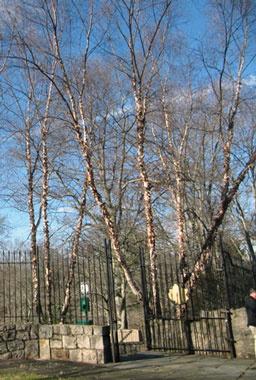A favorite armchair-gardening activity of mine is creating lists of plants for particular conditions. I recently researched native trees likely to withstand heavy storm conditions, particularly high winds.
While it's fun to make lists, it's also important to recognize that healthy trees of all types fare better in a storm. (No surprise, there.) Yard and street trees should be inspected periodically for trunk and branch defects, insect damage, and diseases. It's also important to avoid root disturbances.
Some have observed that trees endure storms better when they are planted in a grouping, not in a line.
Notably some fruit trees, are more brittle or less "plastic" than others (e.g. Callery or Bradford pears). Other trees are very shallow-rooted and more likely to uproot in a storm. Here are some candidates for windy locations. Final selections should, of course, be well-researched, based on other site characteristics.
|
Native trees less than 20’ Chickasaw Plum, Prunus angustifolia Native Trees 20’ – 40’ American Holly, Ilex opaca Native Trees over 40’ American sycamore, Platanus occidentalis Bald Cypress, Taxodium distichum Black Gum, Nyssa sylvatica Happy pruning, happy planting! |
Pin oaks and river birches are known for their ability to weather storms. Both of those tree varieties have fared very well at the Conn College Arboretum during stormy years. 'Heritage' river birches stand at the entrance to Connecticut College Arboretum in New London, CT. River birches develop attractive bark as they mature. |
* Here are a few studies that provide background.
Storm Resistant Trees, University of Florida Extension System
Wind and Trees: Lessons Learned from Hurricanes, University of Florida Extension System. While many of the trees in this study don't grow in New England, others do. I found the study valuable for other advice, such as the idea of planting trees in pods of five or seven rather than in a line.
Impact of Climate Change on Tree Selection--Davey Institute

